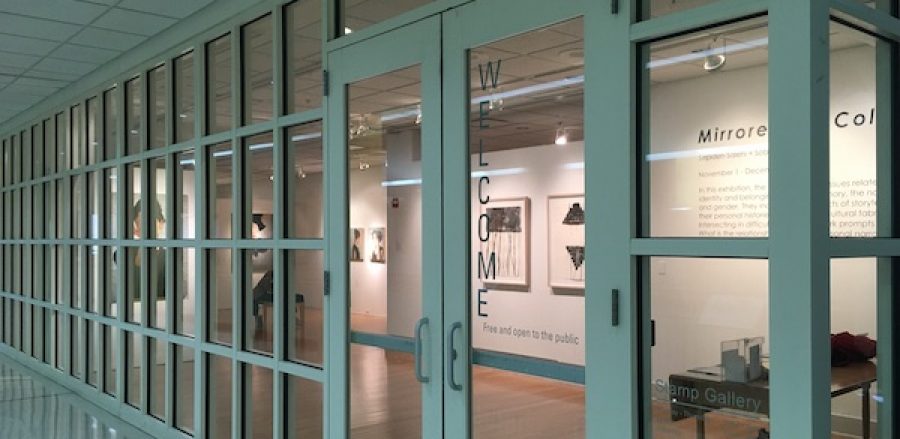Words heard and shared throughout CAPP
Posted: September 5, 2017 | Author: stampgallery | Filed under: Contemporary Art Purchasing Program (CAPP), Current Exhibition | Tags: attachment, collecting, Collection, committee, compassion, contemporary, empathy, undergraduate | Leave a commentIn 2005, the Adele H. Stamp Student Union—Center for Campus Life inaugurated a student-led Contemporary Arts Purchasing Program (CAPP) with the mission to educate and inspire by exposing the campus community to thought-provoking art by noted contemporary artists. As of 2017, the CAPP Collection has grown to encompass more than 50 works of art by 42 artists working regionally, nationally, and internationally.
You can teach people to collaborate; you can teach people to converse. You can teach them skill sets, etiquettes, processes, and protocols. You can motivate them and challenge them and record and reward their successes. But, you can’t teach them how to care. You can make them care, with personal, emotional, or financial incentive. But you can’t forcibly expand one’s capacity to care: to immediately, genuinely, deeply, closely, care for a mission or a cause that exists far beyond one’s circle of life. This is a sentiment that is not meant to be a morbid one; it is meant to separate the human from the worker. Protocols and record keeping is not subjective. The realms in which we each care, wholly and completely, is.
So, when the innate, sincere capacities to care for the same cause overlap in enormous proportion in six individuals − from different places and with histories and narratives that are nearly void of tangencies − who then sit at the same table every week for thirty-one weeks, their work is likened to the dazzle of stars which align. These people recognize that money is power, that people are power, and that their role can have meaningful impact if they want it to. They meet over and over, until they are comfortable beyond the honesty of audibly liking or disliking a work of art. They meet to the point of comfortable vulnerability: celebrating the thrills of found artwork that meets both personal and common visions for the community, vocalizing when a work feels misguided, or admitting when a work feels right but you need the words of your peers to express how.
They begin the task at hand by learning to articulate their collective questions, and craft their collective wants:
We work in consensus; we do not vote.
We can invest in aesthetics. We need to invest in message, in artist.
Who’s voices can we give volume to who have been absent so far?
Controversial is okay. Triggering is not.
All depths of appreciation are valid. All depths of appreciation are equal.
These works are for you, and you, and you.
What is the greatest gift we can give to people, with the power we have?
How can we help people heal?
Visual language can celebrate the sameness of our hearts and the differences of our selves, simultaneously.
I had the privilege of working in precisely the above symphony this past year, and I recognize that it may seem dramatic to compare our communicative chemistry to something of cosmic magic. Our group purchased artwork for a university collection. We did not change statistics, laws, news bytes, missing rights, elections, or minds.
But, if I am a better person today than I am a year ago, I am by learning − through the admirable interactions we did initiate and complete − that the voicing of emotional attachments to things such as this one that I was a part of, concepts such as those we advocated, and people such as those we researched and shook hands with, is not only justified in its own right. It is respected.
Empathy is the newest marketable skill, sensitivity is now a priceless tool, and personal attachment is a universal saving grace. Championing dialogue, emphasizing the gravity of decisions, and verbalizing one’s feelings in poetry or pros or anything in between, require no defense or excuse. They are needed and expected, now more than ever.
To see the artworks acquired by the 2016−2017 CAPP committee mentioned here, visit New Arrivals 2017, exhibiting in The Stamp Gallery now through October 14, 2017.
By Grace DeWitt
